ReservationSearch and reserve rooms
Click here to confirm, change or cancel your reservation
提携法人専用予約
2025.01.05
"Chino Rice Store" is a local rice store that treasures "relationships" and continues to deliver high-quality rice
NEIGHBORS
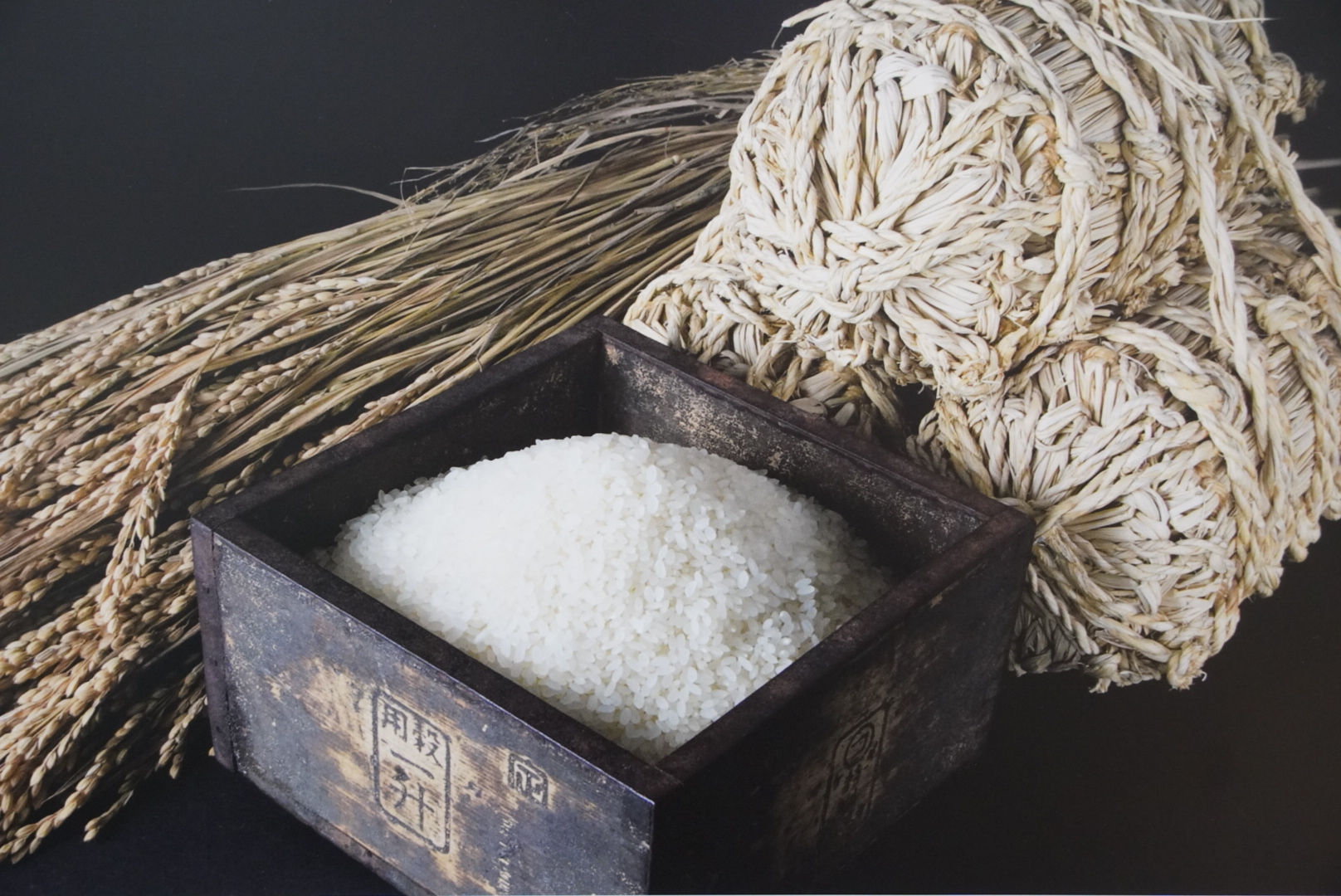
Needless to say, Hokkaido is one of the leading rice-producing regions in Japan. Rice, harvested from rice grown with great care, is an important lifeline for the people of Sapporo, as well as the people of Hokkaido who live in this snowy country.
About 150 years ago, when the northern lands were first developed, it was said that it was "impossible" to grow rice in such frigid conditions. Despite facing such headwinds, the "Akageshu" variety of rice was born as a result of unremitting efforts.

Kyuzo Nakayama, who led rice cultivation to success in the area near Sapporo, now Shimamatsuzawa (Shimamatsu, Kitahiroshima City), distributed his seeds for free, which led to rice cultivation spreading throughout Hokkaido. Today, the roots of Hokkaido's representative rice varieties, such as "Yumepirika," can be found in this "red-haired" variety.
The rice that grows in this northern land is special and can only grow in the land of Hokkaido.
"Hokkaido has an abundance of water and four seasons, making it an excellent environment for growing rice. Due to its genetic characteristics, rice has qualities and qualities that can only be grown in this climate."
So says Yoshinari Tokunaga, the third generation owner of Chino Rice Store, a local rice store with deep roots in Sapporo.
From vague thoughts to strong will
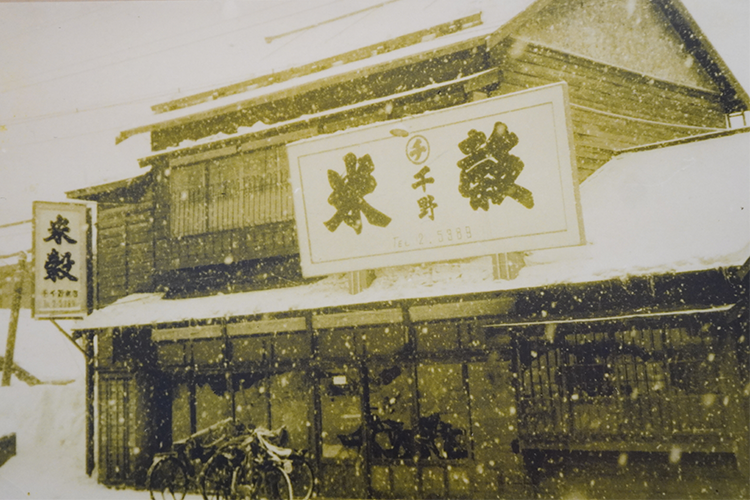
This shop dates back to the mid-Showa period. Tokunaga-san was born on the second floor of this store.
In 1939 (Showa 14), "Chino Rice Store" was founded in what is now Higashi Ward by Tokunaga-san's grandfather, Chino Zenmatsu. Shortly before the outbreak of World War II, rice stores were opening up all over Sapporo. Zenmatsu, who was working in a general store at the time, went along with the trend and started his own business.
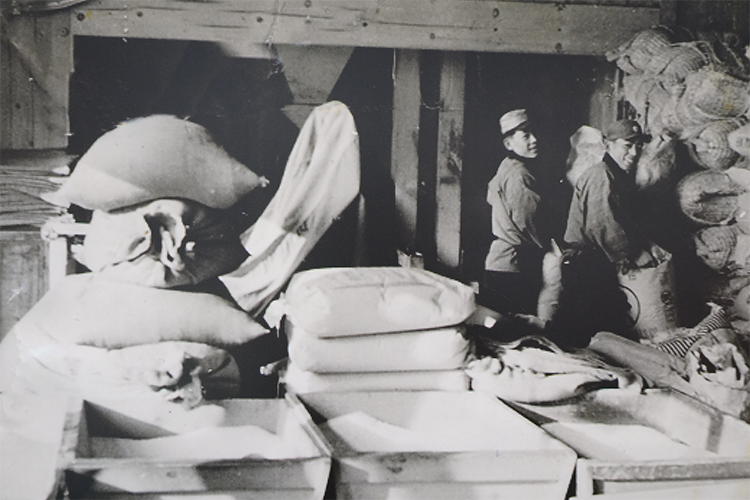
Rice milling at the time
Tokunaga-san grew up watching adults working hard at polishing rice and delivering it. As a child, he said, without giving it much thought, "I want to be a rice merchant."
After that, he went on to a junior college in Otaru and then chose to work for a food company. As he spent several years honing his sales skills and learning the basics of business, he gradually began to realize that he was a rice dealer.
Even though his grandfather told him, "Rice shops have no future. You won't be able to make a living," he remained firm in his determination, saying, "I want to do it myself, so I'm going to do it," and decided to join the family business, "Chino Rice Store." In 2000, he became the representative, and as the third generation, he continues to protect the good name while spreading the deliciousness of rice to as many people as possible.
Connecting with producers who believe in their craft
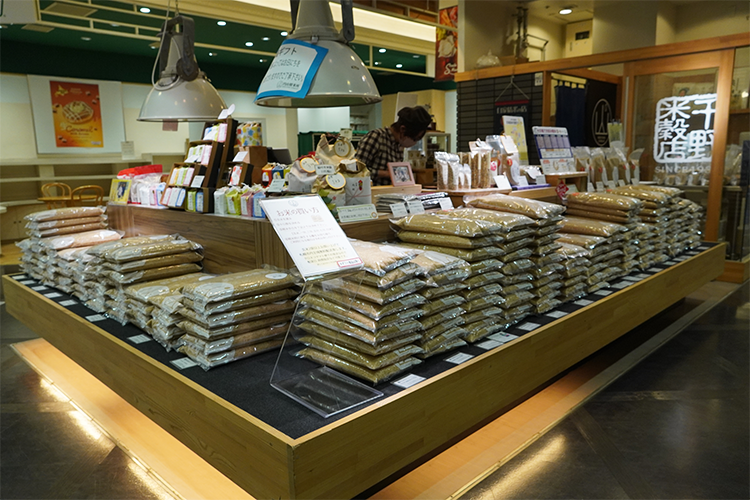
Located on the first floor of the Maruyama Class, the Maruyama Rice Mill is an open space that makes it easy to drop in.
In 2016, we opened our third store, Maruyama Seimaisho, in Maruyama Class, a commercial facility directly connected to Maruyama Koen Station on the subway.
Since its founding, Chino Rice Store has always valued "delivering delicious rice and making customers happy." The store stocks rice from producers that Tokunaga was introduced to through people he trusts.
"The land is an element of it, but in the end it's the people. A person's character is reflected in their rice and rice fields. The producers I choose aren't those who compare themselves to others, but those who value the things that they want to value. I'm sure the rice gods help us meet them," he said with a carefree smile.
Rice that even connoisseurs will be pleased with
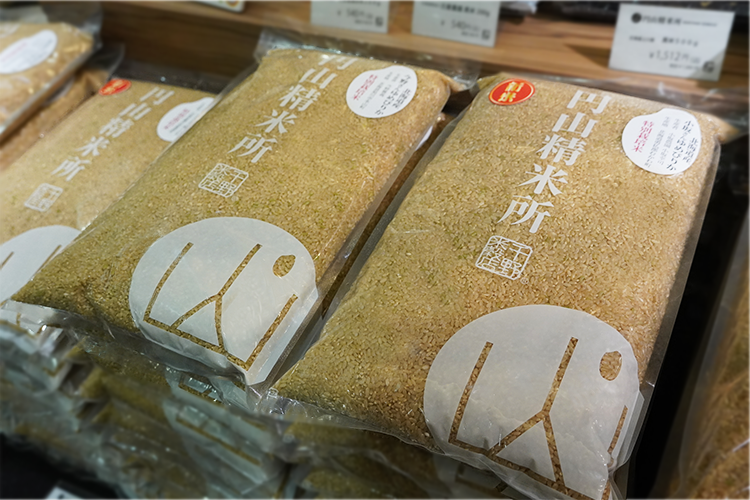
Maruyama Seimaijo always stocks more than 20 varieties of rice, mainly from Hokkaido, with a focus on rice from limited producers and production areas. Most of the products are brown rice, and are sold in transparent bags so that the contents can be seen.
"The best way to judge the quality of rice is actually when it is still brown rice."
In addition to color, essential conditions for high-quality rice are that the grains are uniform and there are few blackened or cracked grains.
We want to deliver high-quality rice in a state where there is no room for hiding or escaping, which is something that cannot be determined after the rice has been milled. This is the mindset of Tokunaga, an expert with many roles in the rice industry, including as a five-star rice master, rice advisor, and rice sommelier.
"I have been involved in rice allergies and research for a long time, and I have connections with researchers and producers. That's why I want to serve rice that even experts can be satisfied with," he says, uncompromising when it comes to serving delicious rice.
We will provide you with "freshly milled rice" according to your preference.
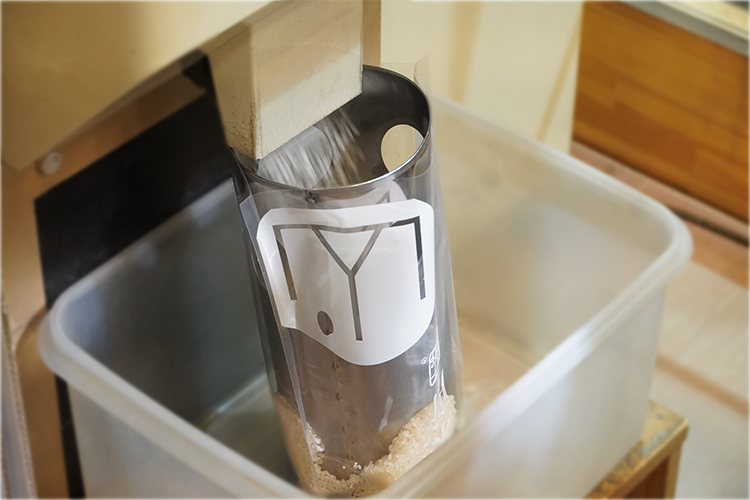
Polishing rice. When the rice's moisture content changes, such as during the harvest season, the degree of polishing is adjusted.
Those who are used to eating brown rice can have it as is, but staff will also polish the rice on the spot to suit your preference, from brown rice to white rice, so you can take home freshly polished rice.
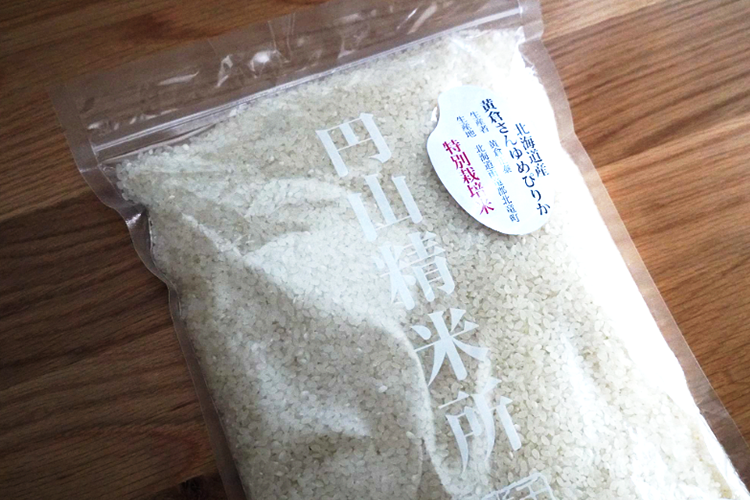
This is polished rice made from "Yumepirika" by Okura of Hokuryu Town, which was selected as the runner-up in the 2024 "Rice 1 Grand Prix in Rankoshi."
Polishing rice is often thought of as "shaving" the rice, but Tokunaga says, "polishing rice is about 'preserving' the delicious, fragrant, and nutritious parts." Three-minute polishing is very close to brown rice, while seven-minute polishing has a flavor close to white rice. In between, five-minute polishing still has a little germ and bran remaining, and if it's high-quality rice, you can taste the sweetness and umami, so many people choose the five-minute polishing.
Enjoy the best of each northern variety
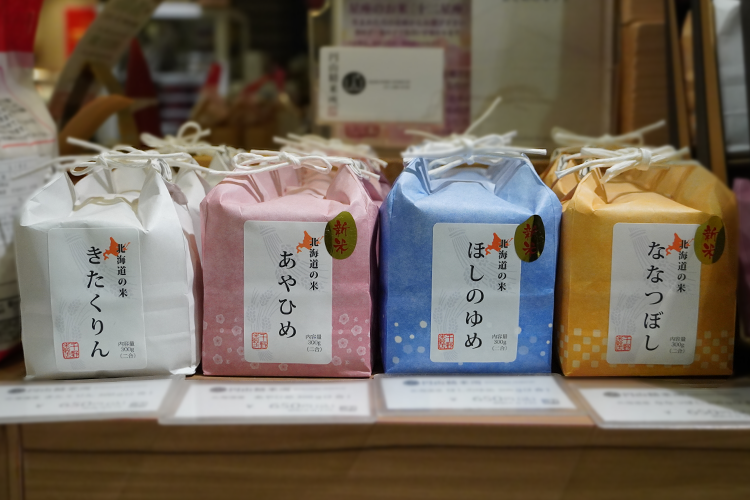
Some of the varieties that originated in Hokkaido. Perfect as souvenirs or gifts.
When we asked him what he would recommend travelers try first, he replied, "You should definitely try Yumepirika. Many different varieties are entered in the contest, but this one stands out as being outstanding. Each and every variety of Hokkaido rice has its own distinct characteristics. It's truly amazing."
Maruyama Rice Mill generally sells rice in 3kg bags for easy transport, but they will accept orders for polished rice starting from 1kg. Try comparing two or three varieties that catch your eye based on the region, producer, or variety you're interested in, and you'll surely be able to enjoy the differences in flavor, grain structure, and texture of each Hokkaido rice.
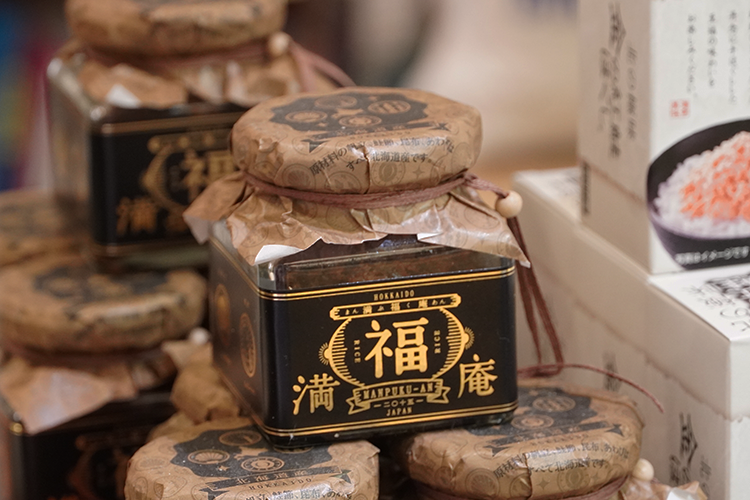
"Manpukuan Seafood Tsukudani" developed by "Senno Rice Store"
And what really brings out the deliciousness of the rice are the "rice accompaniments." The "Manpukuan Seafood Tsukudani," which stands out in the restaurant, is a masterpiece that Tokunaga is proud of, made with salmon flakes, scallops, abalone, and kelp from Hokkaido, and finished with soy sauce from Bibai. These original accompaniments can only be created by someone who knows rice inside and out.
We treasure our connections and deliver high-quality rice
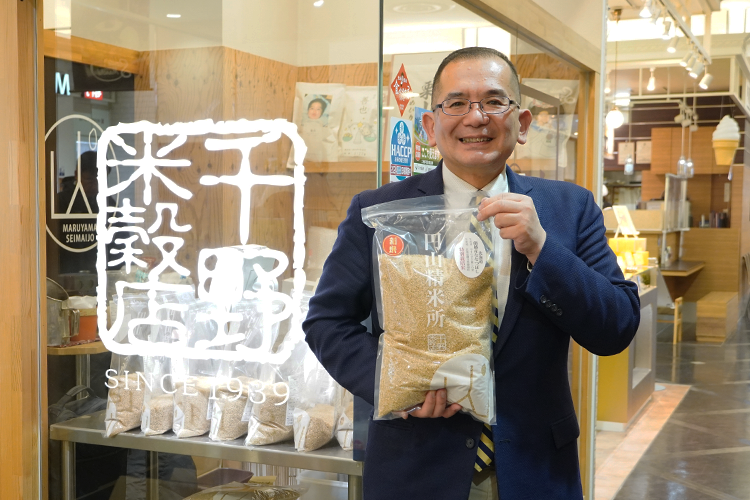
Mr. Tokunaga, the third generation owner of "Senno Rice Store," has a boyish, innocent air about him.
Tokunaga-san's motivation for continuing to deliver rice while cherishing the connections he makes with people is largely due to his experiences as a student. When he was a university student, he took time off school to cycle across Japan, and later traveled overseas, experiencing many different landscapes and meeting many different people.
Tokunaga's original view was the horizon he saw from the Mongolian steppe. The strong interest and curiosity he felt at that time, "What is there ahead...?", is still alive and well. He never loses his gratitude for the many connections that have shaped him.
The words he learned at his first job, "Business is about touching people's subtleties," and the words of encouragement from his grandfather, "Do what others don't do, what others can't do, and what others don't want to do," are what he still relies on.
With these two unchanging themes, Tokunaga-san continues to forge ahead, striving to deliver high-quality rice that represents Sapporo and Hokkaido.
千野米穀店(円山精米所)
住所:北海道札幌市中央区南1条西27丁目1−1 マルヤマクラス 1F
電話番号:011-688-8158
アクセス:地下鉄東西線「円山公園駅」直結
HP:https://chino-grain.co.jp/
SNS:https://x.com/chinobeikokuten
https://www.instagram.com/chinograin/
*営業時間や定休日についての詳細は、上記のリンク先にてご確認ください。



